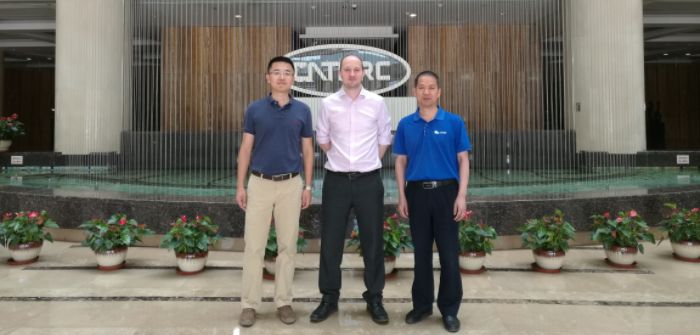The China Automotive Technology and Research Centre (CATARC) has expanded its vehicle development capabilities by acquiring a new, third-generation driving simulator from AB Dynamics.
The new Advanced Vehicle Driving Simulator (aVDS) gives CATARC essential driver-in-the-loop (DIL) testing capabilities, for developing vehicle dynamics, ride handling, ergonomics, driver behavior, powertrain refinement and more. It will also be essential for evaluating and validating ADAS and autonomous technology. CATARC is the first proving ground to acquire an aVDS since the product’s launch last year.
“The use of simulators in vehicle development offers efficiency in both time and cost but it also allows us to validate autonomous technologies,” explained Gongqing Li, vice chief engineer, Automotive Testing and Research Institute, CATARC. “Investing in a third-generation driving simulator is essential if we are going to undertake virtual vehicle development effectively. The versatility of the aVDS means that vehicle systems and configurations can be rapidly tested in different driving environments with a driver-in-the-loop. This is a core requirement for future vehicle development.”
The purchase is intended to help Chinese manufacturers design and test new vehicle concepts and advanced safety systems, including autonomy. The country is expected to see a growing need for driver-in-the-loop simulation as ADAS demand rises. Furthermore, its vehicle development will be enhanced by the dynamic capability of the aVDS, enabling DIL simulation for vehicle dynamics applications that were not previously possible. Steering systems, chassis and suspension can now be modeled so that ride and handling characteristics are accurately replicated by the simulator and usefully evaluated.
With the industry’s increasing levels of AI implementation, the modern simulator can also aid the development of technologies such as AEB, ADAS and full autonomy, helping assess driver-technology interaction in a safe, virtual environment. It is also an essential tool for helping to evaluate occupant comfort and anxiety in an autonomous vehicle, as it negotiates a range of simulated traffic scenarios and roadscapes.


